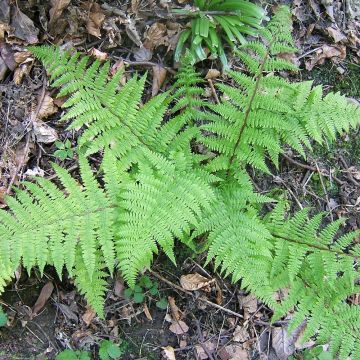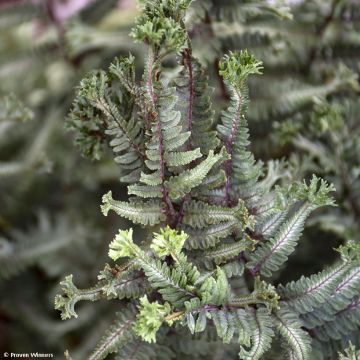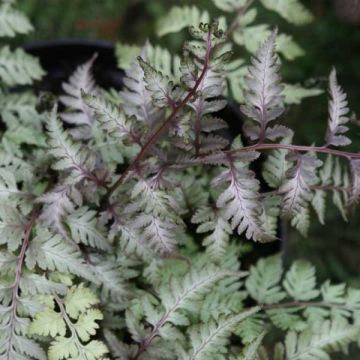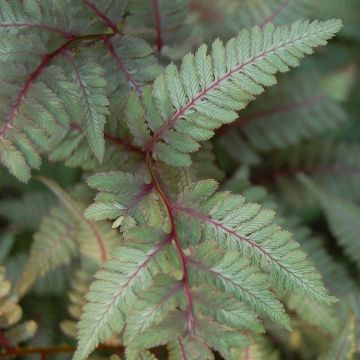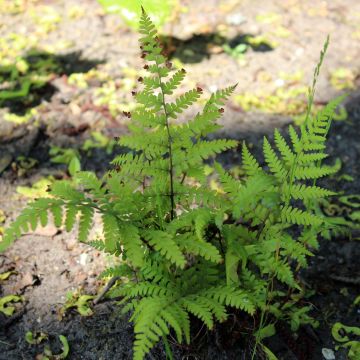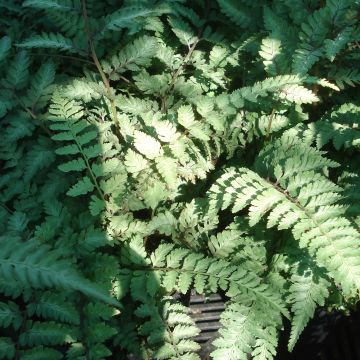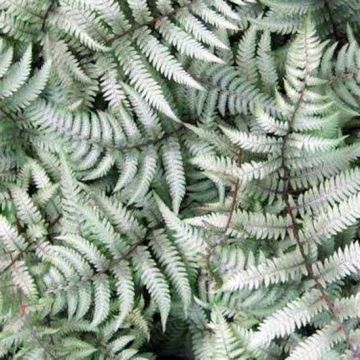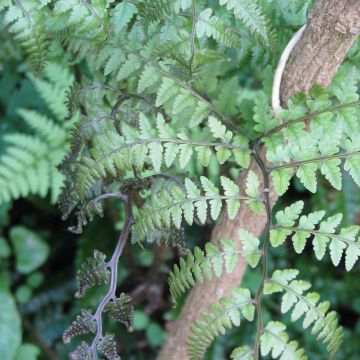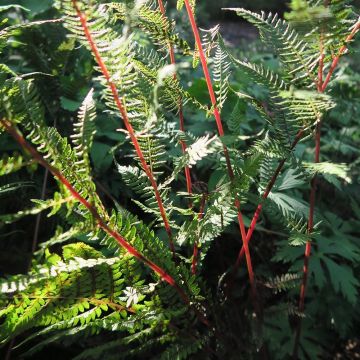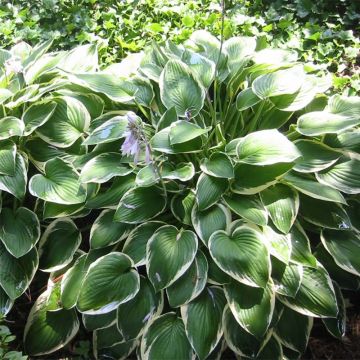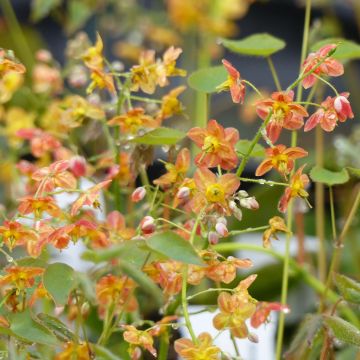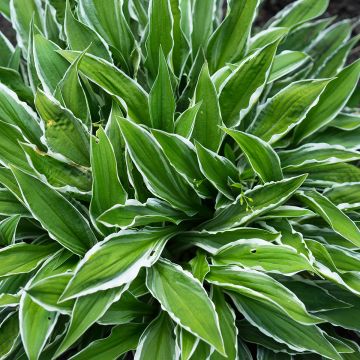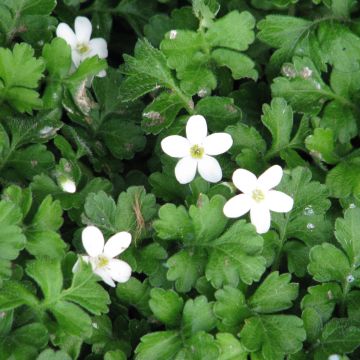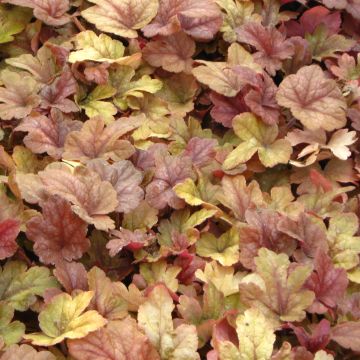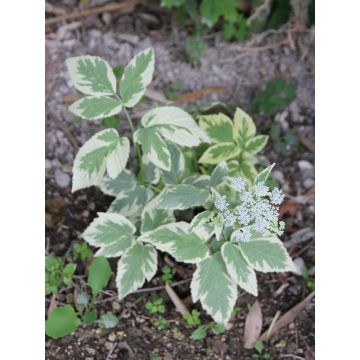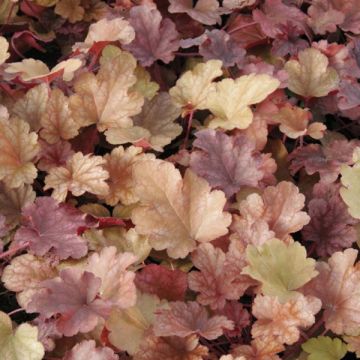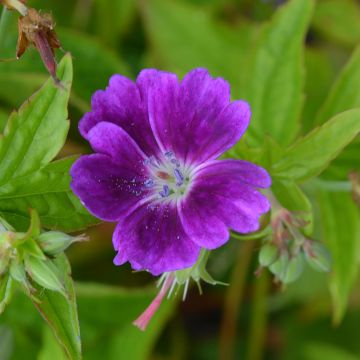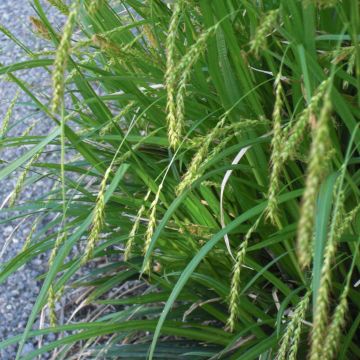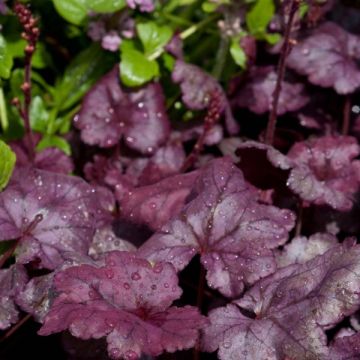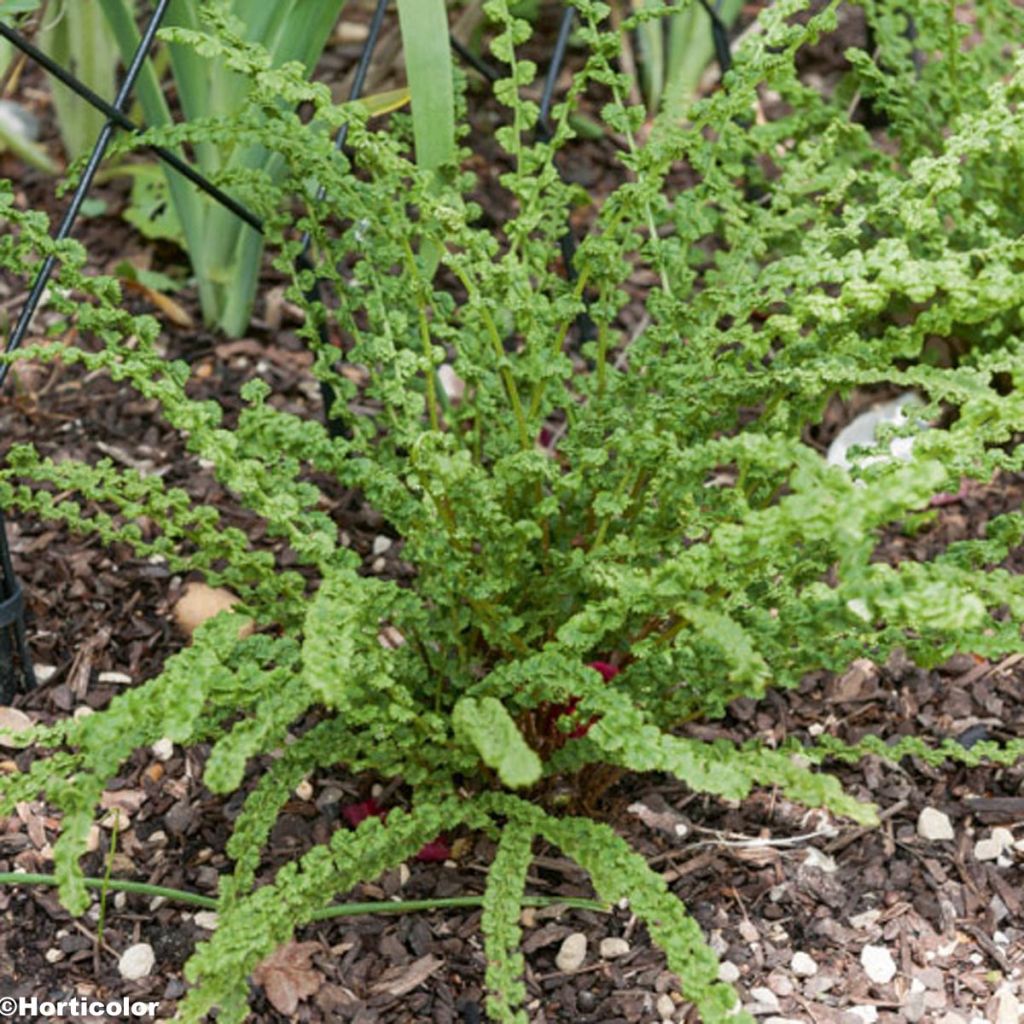

Athyrium filix-femina Frizelliae - Lady Fern
Athyrium filix-femina Frizelliae - Lady Fern
Athyrium filix-femina Frizelliae
Lady Fern
Why not try an alternative variety in stock?
View all →This plant carries a 12 months recovery warranty
More information
We guarantee the quality of our plants for a full growing cycle, and will replace at our expense any plant that fails to recover under normal climatic and planting conditions.
From €5.90 for pickup delivery and €6.90 for home delivery
Express home delivery from €8.90.
Delivery to Corse prohibited: UE law prohibits the import of this plant from mainland France to Corse as part of the fight against Xylella fastidiosa. Please accept our sincere apologies.
More information


Does this plant fit my garden?
Set up your Plantfit profile →
Description
Athyrium filix-femina 'Frizelliae' is a curious lady fern, which vaguely resembles a large tuft of tender green parsley. This small, airy and flexible plant bears deciduous and narrow fronds, with circular and toothed lobes arranged on either side of the central vein, which give it its uniqueness. Their colour is a delicate, satin-like, light green, which is very bright in the shade. This variety of small growth is ideal for containers and borders. It should be grown in a semi-shaded position, in light, humus-rich and moist soil.
Athyrium filix-femina, also known as Asplenium filix-femina, is a perennial fern belonging to the Dryopteridaceae family, just like male ferns belonging to the genus Dryopteris, from which it distinguishes itself by its lesser vigour. It is native to many temperate regions of the northern hemisphere (Asia, North America, Europe). This species was the great favourite of Victorian ferneries in the late 19th century, and has since then produced numerous cultivars, including 'Frizelliae', a cultivar from over a 100 years ago. 'Frizelliae' is a small fern that will not exceed 40 cm (16in) in height and 50 cm (20in) in spread. It grows from an upright and scaly rhizome. Its fronds, with a somewhat fragile appearance, are totally deciduous in winter. They are very narrow and bear rounded and crisped leaflets that are arranged along the thread-like rachis. Due to the thread-like size of its foliage, this plant has less water needs, which allows it to be planted in slightly drier soils, neglected by other ferns.
All ferns from the Athyrium genus are deciduous in winter. That being said, they are very cold-resistant and are very easy to grow in any fresh soil rich in leaf compost. 'Frizelliae', due to its small growth, is very well suited for containers, embellishing a shaded rockery, or bordering a less sunny path. This truly unusual fern does not like overly moist soils in fresh woodlands, and will be a good companion for primroses, creeping bugles, Corydalis, bleeding hearts...
Report an error about the product description
Athyrium filix-femina Frizelliae - Lady Fern in pictures
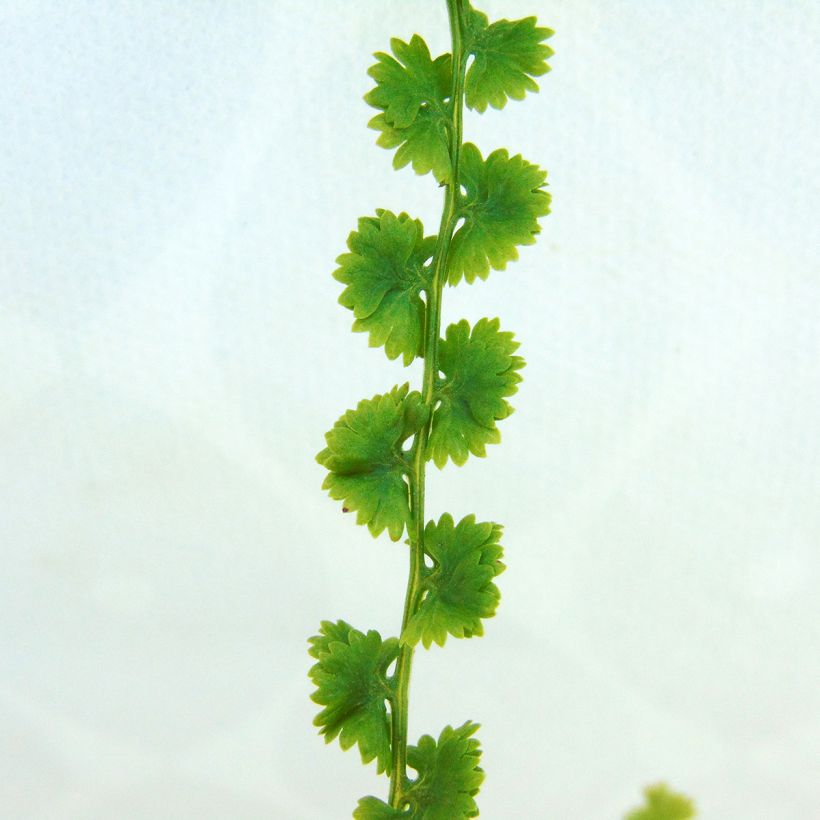

Foliage
Plant habit
Botanical data
Athyrium
filix-femina
Frizelliae
Athyriaceae
Lady Fern
Cultivar or hybrid
Other Athyrium
Planting and care
Athyrium filix-femina 'Frizelliae' doesn't like too much shade and prefers open areas, in a cool climate, in well-drained humus-rich soil that is not too dry or too wet, with a tendency towards acidity. It tolerates water shortages better than most of its counterparts. It can be planted in autumn or spring.
Planting period
Intended location
Care
-
, onOrder confirmed
Reply from on Promesse de fleurs
Shade-loving perennials
Haven't found what you were looking for?
Hardiness is the lowest winter temperature a plant can endure without suffering serious damage or even dying. However, hardiness is affected by location (a sheltered area, such as a patio), protection (winter cover) and soil type (hardiness is improved by well-drained soil).

Photo Sharing Terms & Conditions
In order to encourage gardeners to interact and share their experiences, Promesse de fleurs offers various media enabling content to be uploaded onto its Site - in particular via the ‘Photo sharing’ module.
The User agrees to refrain from:
- Posting any content that is illegal, prejudicial, insulting, racist, inciteful to hatred, revisionist, contrary to public decency, that infringes on privacy or on the privacy rights of third parties, in particular the publicity rights of persons and goods, intellectual property rights, or the right to privacy.
- Submitting content on behalf of a third party;
- Impersonate the identity of a third party and/or publish any personal information about a third party;
In general, the User undertakes to refrain from any unethical behaviour.
All Content (in particular text, comments, files, images, photos, videos, creative works, etc.), which may be subject to property or intellectual property rights, image or other private rights, shall remain the property of the User, subject to the limited rights granted by the terms of the licence granted by Promesse de fleurs as stated below. Users are at liberty to publish or not to publish such Content on the Site, notably via the ‘Photo Sharing’ facility, and accept that this Content shall be made public and freely accessible, notably on the Internet.
Users further acknowledge, undertake to have ,and guarantee that they hold all necessary rights and permissions to publish such material on the Site, in particular with regard to the legislation in force pertaining to any privacy, property, intellectual property, image, or contractual rights, or rights of any other nature. By publishing such Content on the Site, Users acknowledge accepting full liability as publishers of the Content within the meaning of the law, and grant Promesse de fleurs, free of charge, an inclusive, worldwide licence for the said Content for the entire duration of its publication, including all reproduction, representation, up/downloading, displaying, performing, transmission, and storage rights.
Users also grant permission for their name to be linked to the Content and accept that this link may not always be made available.
By engaging in posting material, Users consent to their Content becoming automatically accessible on the Internet, in particular on other sites and/or blogs and/or web pages of the Promesse de fleurs site, including in particular social pages and the Promesse de fleurs catalogue.
Users may secure the removal of entrusted content free of charge by issuing a simple request via our contact form.
The flowering period indicated on our website applies to countries and regions located in USDA zone 8 (France, the United Kingdom, Ireland, the Netherlands, etc.)
It will vary according to where you live:
- In zones 9 to 10 (Italy, Spain, Greece, etc.), flowering will occur about 2 to 4 weeks earlier.
- In zones 6 to 7 (Germany, Poland, Slovenia, and lower mountainous regions), flowering will be delayed by 2 to 3 weeks.
- In zone 5 (Central Europe, Scandinavia), blooming will be delayed by 3 to 5 weeks.
In temperate climates, pruning of spring-flowering shrubs (forsythia, spireas, etc.) should be done just after flowering.
Pruning of summer-flowering shrubs (Indian Lilac, Perovskia, etc.) can be done in winter or spring.
In cold regions as well as with frost-sensitive plants, avoid pruning too early when severe frosts may still occur.
The planting period indicated on our website applies to countries and regions located in USDA zone 8 (France, United Kingdom, Ireland, Netherlands).
It will vary according to where you live:
- In Mediterranean zones (Marseille, Madrid, Milan, etc.), autumn and winter are the best planting periods.
- In continental zones (Strasbourg, Munich, Vienna, etc.), delay planting by 2 to 3 weeks in spring and bring it forward by 2 to 4 weeks in autumn.
- In mountainous regions (the Alps, Pyrenees, Carpathians, etc.), it is best to plant in late spring (May-June) or late summer (August-September).
The harvesting period indicated on our website applies to countries and regions in USDA zone 8 (France, England, Ireland, the Netherlands).
In colder areas (Scandinavia, Poland, Austria...) fruit and vegetable harvests are likely to be delayed by 3-4 weeks.
In warmer areas (Italy, Spain, Greece, etc.), harvesting will probably take place earlier, depending on weather conditions.
The sowing periods indicated on our website apply to countries and regions within USDA Zone 8 (France, UK, Ireland, Netherlands).
In colder areas (Scandinavia, Poland, Austria...), delay any outdoor sowing by 3-4 weeks, or sow under glass.
In warmer climes (Italy, Spain, Greece, etc.), bring outdoor sowing forward by a few weeks.

































